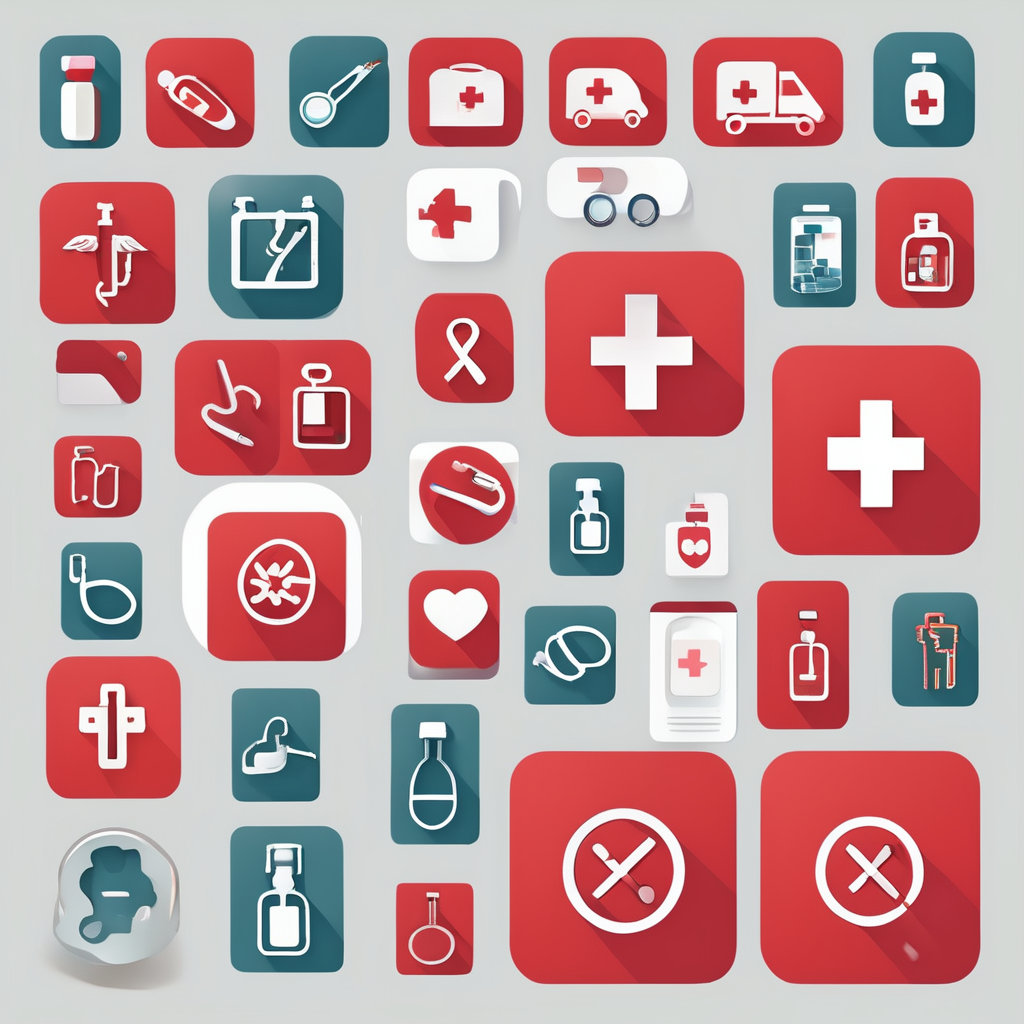Core principles of patient safety in high-pressure UK healthcare settings
Patient safety fundamentals form the backbone of effective care within the NHS. Central to this is adherence to NHS guidelines, such as the National Patient Safety Strategy, which provides clear frameworks to standardise healthcare protocols focused on risk reduction. These evidence-based clinical protocols are designed to mitigate common safety hazards by structuring interventions around verifiable best practices.
Beyond written protocols, the organisational culture plays a critical role. Emphasising continuous improvement ensures that teams learn swiftly from errors and incidents, fostering an environment where patient safety is paramount. This culture encourages openness and accountability, enabling healthcare professionals to address safety concerns proactively.
Have you seen this : What training programs are available for UK health professionals to enhance leadership skills?
In high-pressure settings, integrating safety frameworks with real-time decision-making helps maintain quality care despite urgent demands. Applying patient safety fundamentals involves constant vigilance and regular updates to healthcare protocols, ensuring alignment with evolving evidence and NHS guidelines. Such comprehensive strategies are essential to safeguard patient outcomes amid the complexities of UK healthcare environments.
Staff training and preparedness
Continuous healthcare staff training is vital to uphold patient safety fundamentals, particularly in fast-paced UK healthcare settings. NHS-mandated training programmes ensure that staff regularly update their knowledge and skills in line with evolving NHS guidelines and healthcare protocols. These programmes encompass a variety of teaching methods, with a strong emphasis on practical application.
Also read : Understanding periodontal disease: treatment and care options
Central to this learning is NHS simulation training, which uses realistic, scenario-based exercises to prepare healthcare professionals for high-pressure situations. These simulations improve decision-making, coordination, and technical skills by mimicking emergencies common in hospitals. For example, teams may rehearse resuscitation techniques or urgent surgical interventions, cementing their ability to act swiftly and competently.
To maintain readiness, ongoing competency assessments and feedback sessions form an essential part of staff development. These evaluations identify areas for improvement and reinforce best practices aligned with patient safety fundamentals. They also provide opportunities for reflective learning, helping staff to internalise healthcare protocols effectively.
This structured approach to training and preparedness embeds a culture of continuous improvement, ensuring healthcare teams are equipped to deliver safe, high-quality care even under pressure. It highlights the integral role of education in translating patient safety frameworks into everyday clinical excellence.
Effective teamwork and communication
Clear healthcare communication is crucial to maintaining patient safety fundamentals in high-pressure UK healthcare settings. One key element is the use of standardised handover protocols. These processes ensure comprehensive, accurate transfer of patient information between interdisciplinary teams, reducing the risk of errors during shift changes or care transitions. For example, structured verbal and written handovers help avoid missed details about treatment plans or medication.
Collaborative teamwork among interdisciplinary teams is essential, especially in acute situations requiring rapid, coordinated responses. When doctors, nurses, and allied health professionals understand each other’s roles and communicate openly, decision-making becomes more efficient and focused on patient safety fundamentals. This synergy supports adherence to established NHS guidelines and healthcare protocols.
Clear, closed-loop communication further strengthens team performance. This practice involves confirming messages to ensure instructions are heard and understood correctly. In emergencies, closed-loop communication minimizes misunderstandings, providing a reliable way to execute healthcare protocols effectively. By embedding these communication strategies, healthcare teams create a safer environment aligned with NHS patient safety fundamentals.
Stress and fatigue management among healthcare professionals
Managing stress and fatigue is essential to maintaining patient safety fundamentals in UK healthcare settings. Fatigued staff are more prone to errors, which can compromise adherence to vital healthcare protocols and NHS guidelines. To address this, NHS policies set clear duty-hour limits, ensuring healthcare professionals have adequate rest. Many trusts provide dedicated rest facilities to support staff wellbeing during intense shifts.
Access to staff support programmes is another critical element. Psychological resilience resources, including counselling and peer support, help professionals manage stress proactively. Encouraging an environment where healthcare workers can safely speak up about fatigue or mental health challenges fosters a culture of openness aligned with NHS patient safety fundamentals.
Implementing these measures reduces burnout risks and sustains workforce performance. For example, structured breaks and fatigue management training allow staff to recognise signs of exhaustion early and seek timely assistance. This holistic approach safeguards both caregiver health and patient outcomes, reinforcing the importance of organisational commitment to stress management within healthcare protocols.
Ultimately, integrating fatigue policies with ongoing staff wellbeing initiatives supports safer care delivery in high-pressure environments, reflecting key NHS guidelines focused on protecting both patients and practitioners.
Utilising technology for enhanced safety
Harnessing healthcare technology plays a pivotal role in reinforcing patient safety fundamentals across UK healthcare settings. Central to this is the adoption of electronic health records (EHRs), which streamline communication by ensuring accurate and up-to-date patient information is accessible to all relevant clinicians. This reduces errors linked to incomplete or outdated data, enhancing compliance with NHS guidelines and healthcare protocols.
Real-time patient monitoring systems provide continuous observation of vital signs, enabling early detection of deterioration. These systems support proactive interventions by alerting clinical teams swiftly, which aligns with patient safety fundamentals focused on risk mitigation within NHS frameworks.
Furthermore, technology facilitates rapid response through integrated escalation-of-care tools. These digital solutions standardise emergency procedures, ensuring healthcare staff follow NHS protocols efficiently under pressure. For example, automated alerts can trigger predefined response pathways, reducing delays in critical decisions.
In essence, integrating advanced healthcare technology promotes seamless information sharing and robust patient monitoring. This technological foundation empowers clinical teams to deliver safer care aligned with established NHS guidelines, ultimately fortifying patient safety fundamentals in increasingly complex care environments.
Incident reporting and regulatory oversight
Robust incident reporting systems are critical to maintaining patient safety fundamentals within UK healthcare. The NHS employs comprehensive incident reporting frameworks designed to capture events ranging from minor errors to serious adverse outcomes. These frameworks enable timely investigation and root cause analysis, essential for improving healthcare protocols and aligning practice with NHS guidelines.
The Care Quality Commission (CQC) plays a pivotal role by enforcing patient safety regulation in the UK. It mandates regular reporting and audits, ensuring accountability and compliance across trusts. For example, trusts must submit detailed reports on significant incidents, which the CQC reviews to monitor trends and enforce corrective actions. This regulatory oversight strengthens safety culture and drives continuous improvement.
To encourage transparent reporting, many NHS trusts use anonymous NHS incident systems, empowering staff to report concerns without fear of repercussion. This openness fosters a proactive patient safety environment where healthcare teams can identify risks early and implement preventive measures.
In summary, the integration of structured incident reporting with stringent regulatory frameworks provides a mechanism for learning and accountability, reinforcing patient safety fundamentals within NHS healthcare protocols. This ongoing vigilance is vital for upholding NHS guidelines and enhancing care quality in high-pressure settings.
Real-world examples and expert perspectives
Exploring patient safety case studies provides valuable insight into applying patient safety fundamentals in UK healthcare. For example, a London hospital reduced medication errors by implementing stricter double-checking protocols aligned with NHS guidelines. This real-world example demonstrates how adherence to healthcare protocols directly improves outcomes.
Leading practitioners emphasise the importance of ongoing evaluation and adaptation. Experts advocate for multidisciplinary collaboration and regular audits to identify system weaknesses early. Their opinions highlight that embedding patient safety into daily routines is crucial for sustained success.
Recent NHS safety campaigns, such as those focusing on sepsis recognition, illustrate nationwide efforts to raise awareness and standardise care. Audit findings from these campaigns show measurable improvements in early intervention rates, underscoring the effectiveness of coordinated strategies based on NHS guidelines.
By examining UK healthcare best practices, teams can learn from successes and challenges, fostering a culture of continuous improvement. These case studies and expert perspectives complement the established patient safety fundamentals, reinforcing their practical value in complex clinical environments. This approach motivates healthcare professionals to innovate and optimise safety within their own settings.

